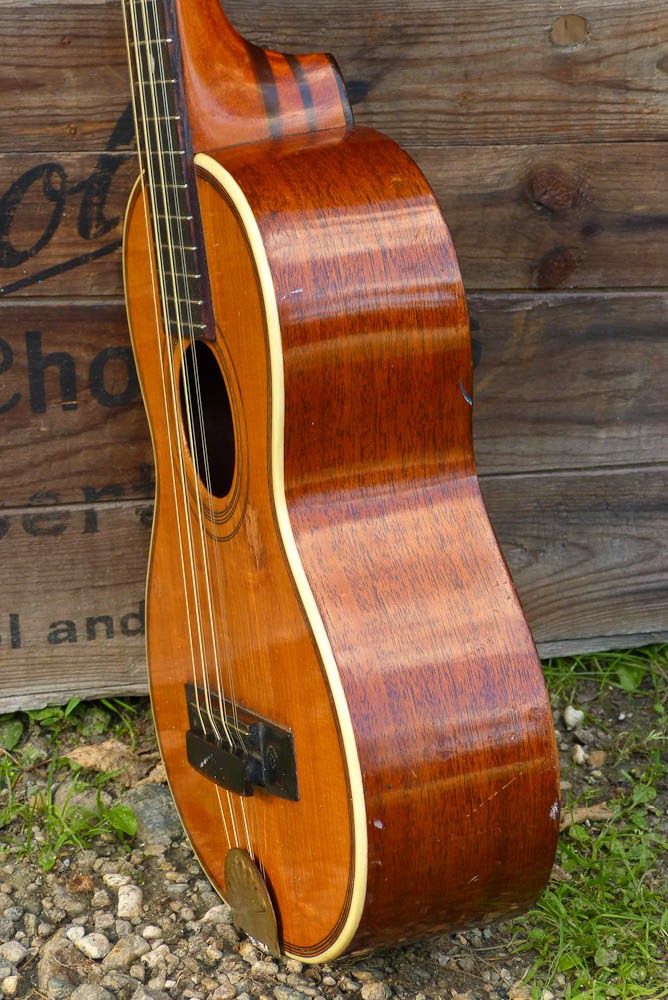c.1925 SS Stewart Fancy Mahogany/Spruce Tiple
This instrument (a customer's) started off as a complete question mark to me: who made it? Then I got into working on it and I really do think that it has a good chance of being a Louis Sutz build. It's overall built like a high-end version of a Chicago-school tiple but with some weird quirks including oddball thick-edged binding (which I've seen on Sutz guitars floating around on eBay as well), the down-turned (sanded-in) soundhole edge, clean inside work, and dyed-rosewood components. It also has the same sort of "feel." I could tell right off that it was a nicer-grade instrument and certainly doesn't fit in the standard lineup of Regal or Harmony Chicago builds (nor their usual body outlines). I think failing my detective work going to Sutz I'd place it maybe, just maybe as relating somehow to either Weymann or Lyon & Healy... but I so doubt that. I'm almost certain it's a Sutz make.
But... who cares, anyway? Heh heh. It sounds fabulous and plays "super." The work here included a neck reset, fret level/dress, crack cleating/fills, and setup. I've been trying to get this guy finished up for a week and a half (at which point most repair was complete) but I dragged my feet clamping up the cleats for the cracks below the bridge as the soundhole only accommodates so many clamps at a time...!
The woods: solid spruce top, solid mahogany back/sides. I think the neck may be Spanish cedar but I'm not quite sure. Both the bridge and fretboard are rosewood but were originally ebonized. The nut is actual ebony, however.
This tiple started out as a bridge/pin-style strung instrument and was converted probably in the 40s (judging by the tailpiece) to a tail-loaded instrument. The latter is the wisest way to string a tiple and I swear that every single one that's strung that way sounds far louder, more open, and rich than left with the original string path. It's almost entirely due to relieving the sideways twist-tension of a tie-block/pin style load. This is why I left that alteration alone... not to mention it looks like that bridge has been both reglued and doweled back on several times.
Rosewood-veneered headstock, too.
There's signs of use and earlier work on the fretboard but those frets were in decent shape. I had to lightly seat a few of them and drop-fill a few with some super glue to stabilize a few more but I only needed a light fret level/dress to get them back up to spec before setup.
Here you can see the bridge, its associated wear and tear, and some hairline cracks that probably opened up during "surgery" in times past. See how they match the aftermarket drill locations on the bridge? Sigh.
The wood quality throughout is Martin-grade stuff. Real nice.
...and these tuners are actually pretty tight and effective for their age, too.
The streaks in the heel are actually in the wood itself as I could see them clearly all around with the neck off. What's also amazing is that after resetting the neck exactly to where it was to begin with t he action was almost spot-on at 1/16" at the 12th fret without altering the bridge at all. I was shocked because that never happens... which also means that this was in that rare handful of instruments that actually played nicely when it was first built and that it's remained relatively stable over time.
Rosewood heel cap...
...nice big endpin, too.
Here's the Stewart branding in the soundhole which is very typical for mid-20s Stewarts.

















Comments